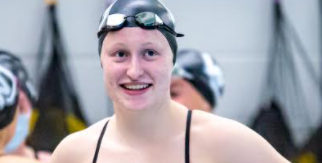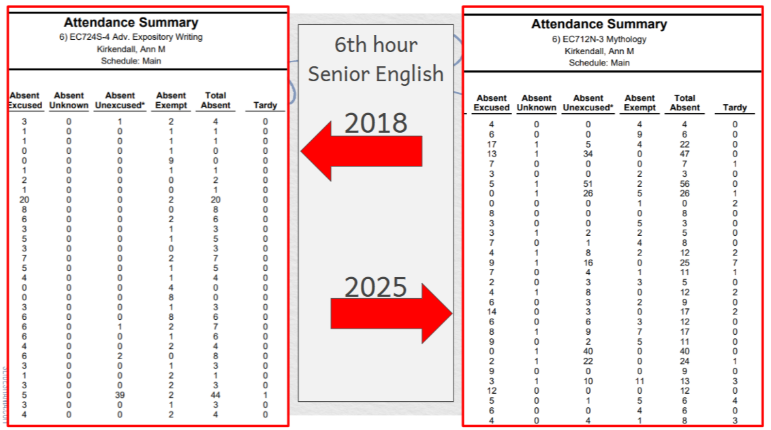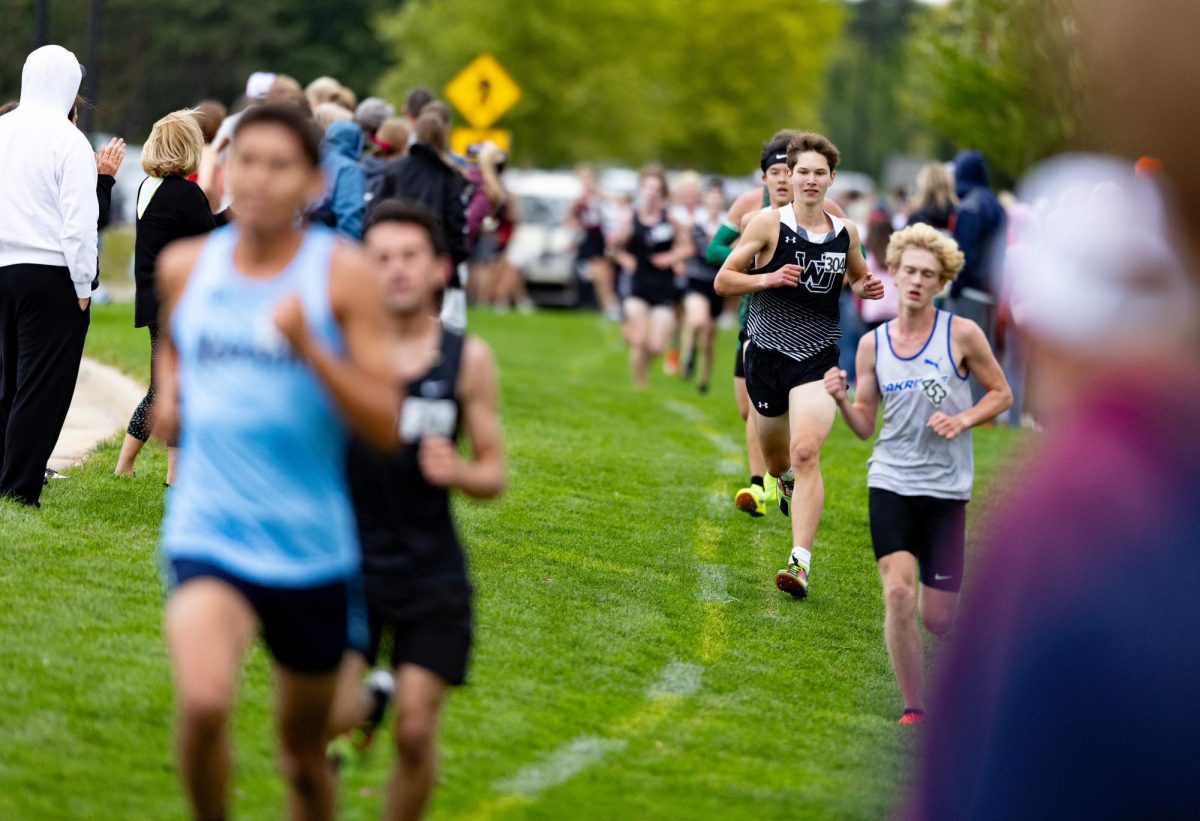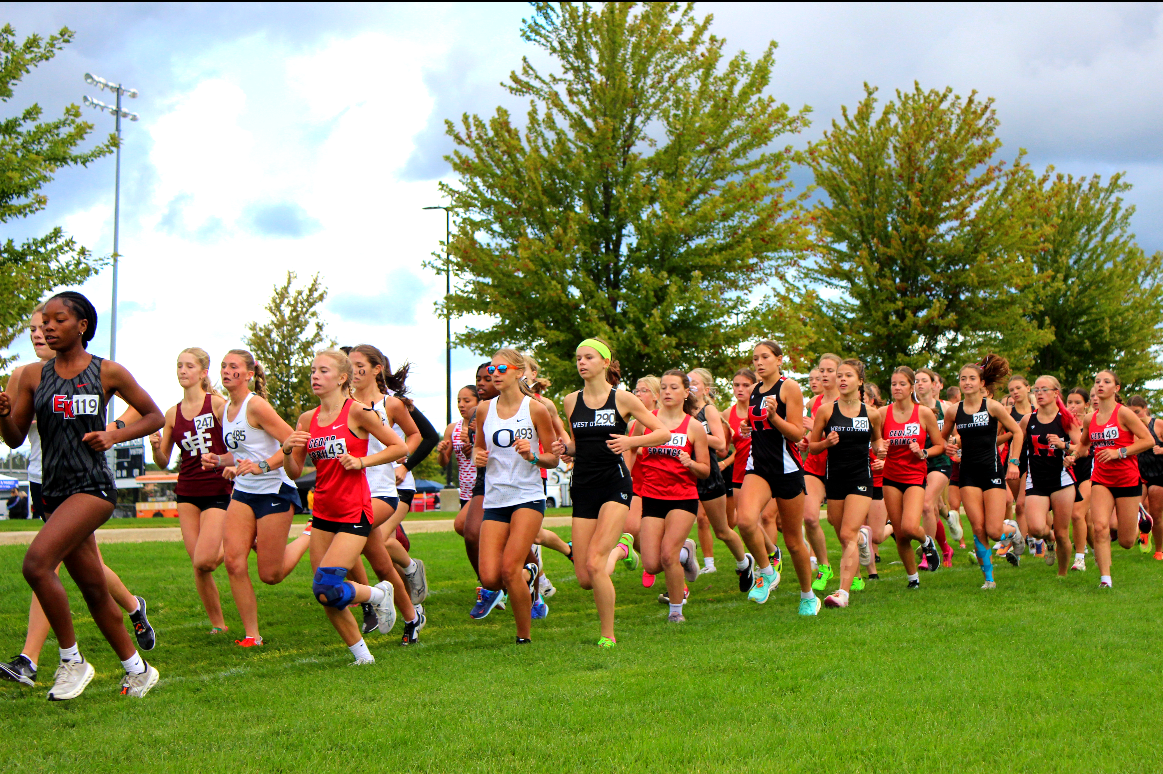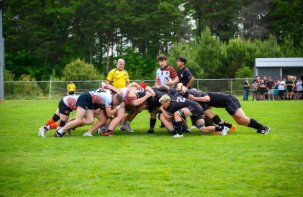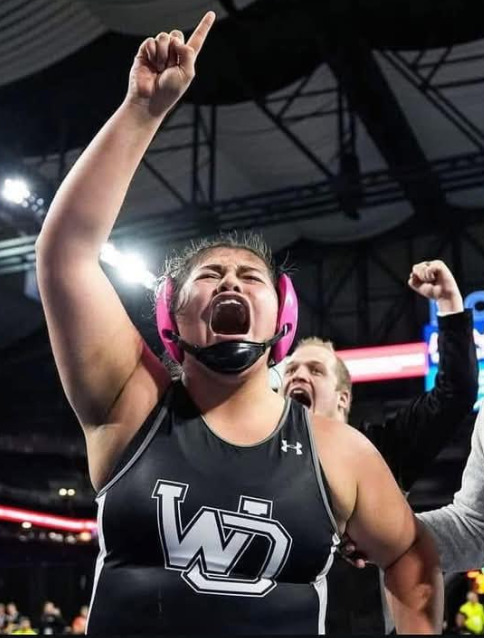As the third leg of the West Ottawa 400 yard freestyle team makes her final flip turn, a swimmer steps up on the block. Decked out in her black Arena tech suit, her WO cap, and her TYR goggles, she prepares as her teammate gets closer to the finish. She takes a final glance at her competition, the Grand Haven relay, before turning back to focus on her partner. When her teammate reaches the wall, she launches into the water. Coming up after the flags, she sprints, kicking hard and using her shoulders to pull her through the water. She started behind, but after every flip turn she gains on Grand Haven. She heads into her final flip turn and explodes off the wall, using all her energy to finish ahead. She hits the wall hard, turning to look at the scoreboard for results. A few seconds later, her team erupts in shouts and cheers. She had won. Conference champs.
Sr. Lilly Brandt has always been a naturally talented swimmer, leading her middle school team and taking part in MLA, one of the top swim programs in the area from an early age. However, natural talent is only a small part of her success.
Over her swimming career, Brandt has learned a variety of techniques to improve her swimming abilities. One technique in particular, however, helped Brandt increase her speed in the water.
According to Brandt, four or five years ago Jim Whitehead, her MLA coach, introduced “shoulder driven freestyle” to the team, a strategy that made use of shoulder rotation while simultaneously limiting overall body movement.
At first Brandt was apprehensive about trying out a new technique. “It was so different from anything I had done before. I was a little worried that it was going to make my stroke slower because I had never done anything like it,” Brandt said.
However, after many practices focusing on the new technique and a few meets using shoulder driven freestyle, Brandt felt the improvement. “Once I learned how to do it, I felt stronger in the water and got faster, especially in the sprinting events,” said Brandt.
Moving into high school, Brandt’s focus on shoulder driven freestyle continued with help from West Ottawa’s swim coach, Steve Bowyer.
Bowyer has seen the effects of shoulder driven freestyle in many athletes, including Brandt. He explains that he believes one key to Brandt’s time drops in high school is the constant use of the technique.
“I think Lilly has always been fast, but you get to a certain point where ability only takes you so far. She had probably been swimming 25 seconds in the 50 free for a long time from when she was in middle school to early high school, but I think she has made that jump from going 25 seconds in a race to 24.0 and 23 mid. Definitely the shoulder driven technique has been a big big part in that jump,” Bowyer said.
In the past ten years, shoulder driven freestyle has increased in popularity because of its effectiveness. “I would say the first time I ever heard about it was at a clinic where Mike Bottom was at; he is the coach at the University of Michigan and he is big on this ‘three-style freestyle’,” said Bowyer.
As shoulder driven freestyle has risen to popularity, Whitehead, Bowyer, and many other coaches have exposed their teams to the technique.
Bowyer makes a point to focus on teaching younger swimmers how to utilize rotation to increase speed in events. He explains that there are two types of freestyle, one being shoulder driven and the other being hip driven, a technique mainly used in distance events.
To understand shoulder driven freestyle, Bowyer explains that the swimmer’s arms should be similar to that of a kayak paddle. “Your arms are in complete opposition of one and other at all times. It would almost be like a kayak paddle through the shoulders to actually bring your shoulders up together more,” said Bowyer.
He also explains that swimmers must get their kick and tempo (stroke rate) up to successfully utilize the technique. “When you swim shoulder driven you need to keep your hips flat and have a good strong kick and then everything just rotates in the shoulders and the upper body,” said Bowyer.
By increasing tempo, kick, and rotation in the shoulders, swimmers like Brandt power their body through the water for short periods of time. Due to the amount of power needed for the technique, shoulder driven is impossible to sustain for long distances. “You could never do it for 500 yards because your body would give out. You couldn’t continue it for that long,” said Bowyer.
Through many drills and sets focused on shoulder driven, several younger sprinters on the team have adopted the technique. Frosh Ella McNeely credits her time drops to Bowyer’s teaching of shoulder driven freestyle.
At the start of the season, McNeely explains that she had a choppier stroke which limited her speed. But after learning about and focusing on shoulder driven, McNeely was able to drop from 29 seconds to 27.01 seconds in the 50 yard freestyle.
“I am really proud of that change I have gotten, and I definitely think that is because I have been working on getting momentum and movement from the shoulder rotation,” McNeely said.
As many swimmers have found, McNeely said that shoulder driven is not difficult to learn. “If you stick with it and practice it as much as you can, you can get better. I feel like for me I have gotten better as I stick with it more throughout the season,” McNeely said.
While learning shoulder driven, McNeely and other younger swimmers look toward Brandt and other senior swimmers to see the technique in action.
“Today I was in her (Brandt’s) lane and it was really interesting to see how fast she can go. There was a lot of momentum in the water, a lot of motion. So it was very interesting to see that,” said McNeely.
Swimmers like Brandt and McNeely show that shoulder driven freestyle is a powerful tool when used correctly that takes a naturally talented swimmer to the next level.
After winning conference, Brandt and the West Ottawa swim team’s next step is the MHSAA D1 State Meet taking place on November 21 at Hudsonville. Brandt is projected to be a high scorer for West Ottawa, hopefully leading WO to a top ten state finish.

